Plastering work: the intricacies of construction work

During the overhaul of the premises, as a rule, it becomes necessary to carry out plastering work. This is a laborious business and raises many questions for those who decided to do it on their own and for the first time.
It is best to contact professional craftsmen when planning plastering work. If you decide to plaster the walls yourself, you need to carefully study all the subtleties and nuances in order to achieve ideal results.
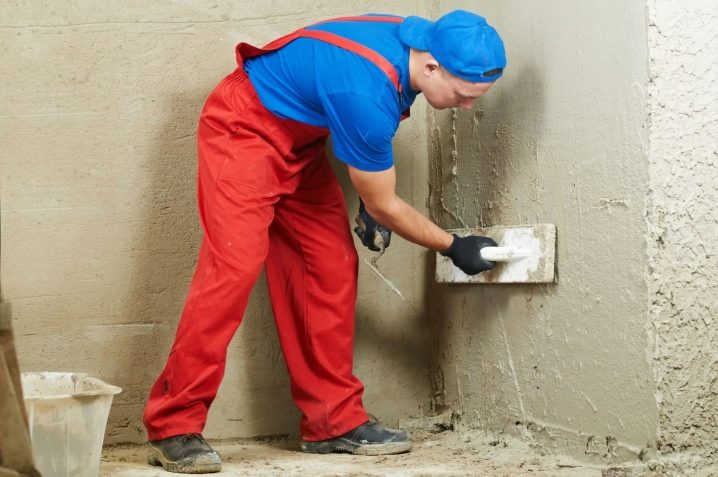
Peculiarities
Mixtures are of different types, have different characteristics and nuances of application. Different plastering compounds are used indoors and outdoors.
To correctly determine what kind of plaster you need, you need to understand the features of the walls. The deciding factor will be the material from which the walls are made. Most often, the walls are wooden, brick and concrete.
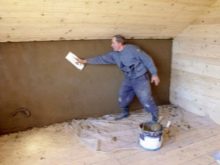
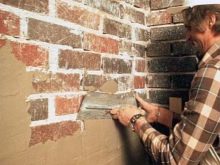

To plaster a wall made of brick, you need a mortar prepared on the basis of cement... There are two options: cement mixed with sand or cement mixed with gypsum. The key difference between solutions in the solidification time... Gypsum will set faster, so the solution with gypsum must be prepared immediately before application and in small portions, while the mixture with sand can be mixed in a larger volume.
If the wall material is concrete, before plastering, you need to give the wall a slight roughness for better adhesion of the mixture to the surface.
In this case, the wall is treated with a primer with quartz chips. And just as in the case of a brick wall, gypsum is added to the mortar to further strengthen the adhesion. A primer must be used for the concrete wall.
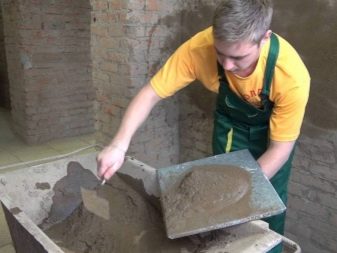
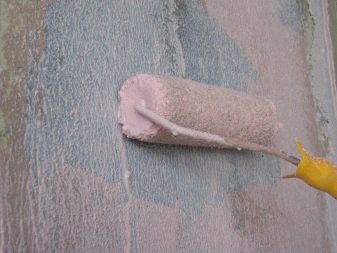
Walls from foam blocks do not need additional insulation, so they are plastered for decorative purposes. A primer is required here, since the foam block has poor binding ability. When choosing a solution, the adhesion rate is of decisive importance.
Wooden walls due to their smoothness, they are less suitable for plastering. But this can still be done by thoroughly preparing the surface. It must be carefully cleaned and supplemented with missing roughness, serifs, stripes, cuts. You can use additionally knocked down wooden lattices, which will serve as the basis for the first layer of the plaster mixture and will allow it to grip this intermediate layer more firmly.
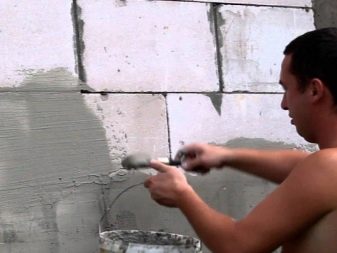
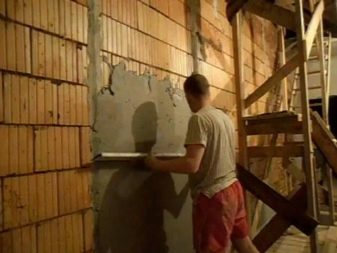
When plastering walls with irregularities, you will need to install a reinforcing mesh, which will become the frame for the future new layer of the wall.
And in order to properly process the corners with the mixture, you will need an additional tool - a trowel. It is also better to plaster such walls using lighthouses. This is a special system of profiles that are attached to the wall and then serve as a guide for leveling the surface.
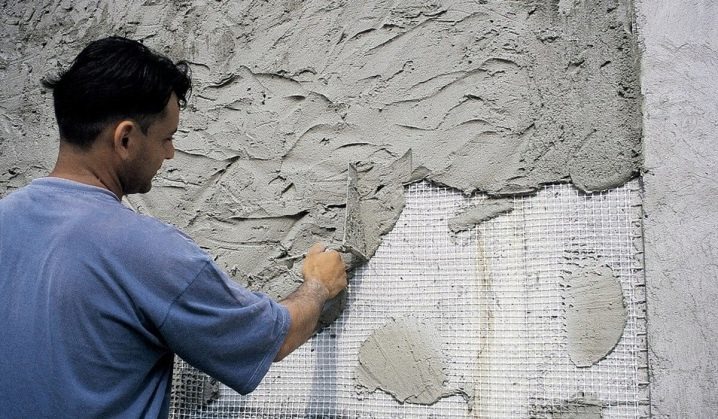
Advantages and disadvantages
The advantages of plaster are obvious: this coating is a versatile material for finishing both internal walls and external facades. Ordinary plaster protects walls from the influence of destructive factors, levels the surface, and can enhance the sound and heat insulation of the room.Decorative plaster is a finish whose beauty and durability are undeniable.
An alternative can be walls covered with drywall, but you need to understand that drywall has a number of disadvantages, the most important of which is its fragility. And using plaster for interior decoration, you can plan further work on the wall, for example, installing mounts for plasma TVs or shelves. Such a wall will withstand a heavy load.
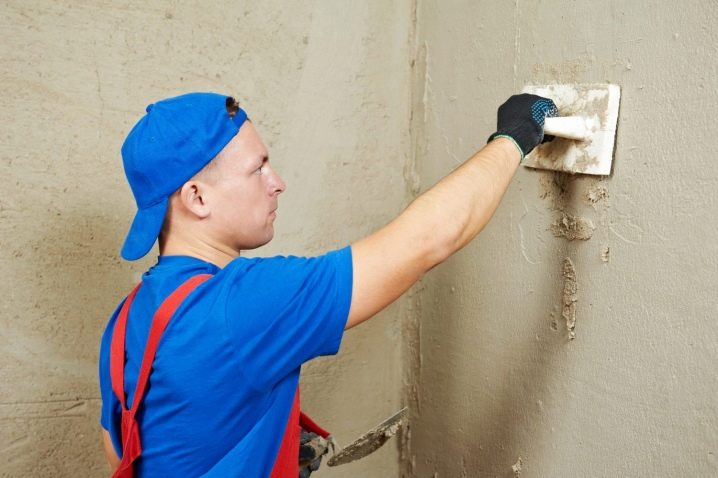
The properties of the plastering mix depend on the base.
Acrylic
The acrylic-based mixture is resistant to microorganisms, has a vapor permeability, but this plaster is more prone to contamination than other types. In this case, acrylic resin acts as the main component, which gives greater strength to the finished coating. It can be cleaned with conventional products, water and cleaning agents. And the facade finish applied from the outside can even be watered with a hose.
If such plaster is used on top of a reinforcing mesh, it will significantly increase the resistance of the wall.
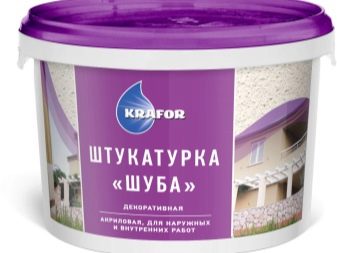
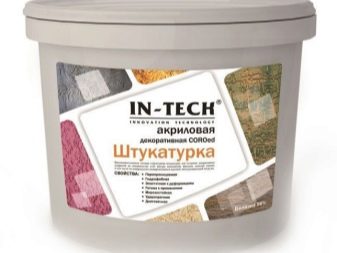
Acrylic compounds are divided into two categories: for indoor and outdoor use.... Ready-made acrylic mixtures can be supplemented with antifungal components and tinted in any color. It dries quickly relative to other plasters, therefore it will have to be applied with a good speed. This must be taken into account when planning the scope of work.
You also need to remember that when such a mixture dries, its color will fade and become less saturated, therefore, in order to get brighter and more vibrant colors, you will need more tinting liquid.
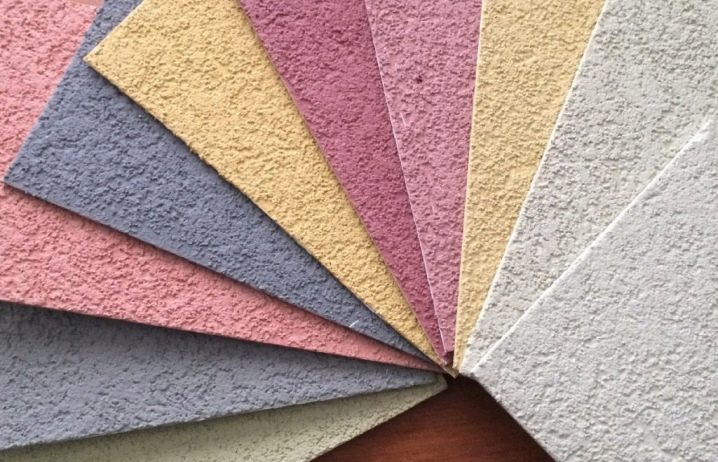
It is advisable to purchase primer and plaster from one manufacturer., since their properties will complement and reinforce each other. Thin-layer plasters are produced ready-made.
If you need to get a thicker layer, then it would be more optimal to purchase a dry mixture, which is diluted according to the proportions indicated on the package, and it is more convenient to apply it using special machines. However, this will not avoid leveling the finished layer with hand tools.

Silicate
A mixture based on water glass has a high vapor transmission capacity, does not absorb contamination, it is used when it is impossible to apply a standard (acrylic) one. Facades of buildings are covered with silicate plaster. Due to its structure, this mixture adheres well to difficult surfaces and has high adhesion. Has the properties of insulation.
One of the nuances of such a mixture is the color change when wet. When wet, the wall will darken, then return to its original color as it dries.
The solution will dry out rather quickly, which must be remembered. Such plaster is produced immediately in finished form, therefore it has a rather limited palette, which must also be borne in mind.
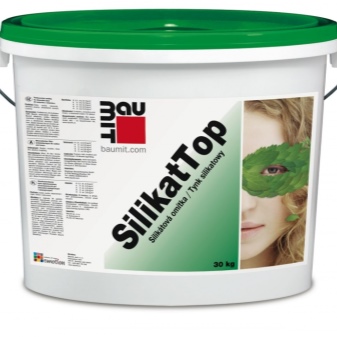
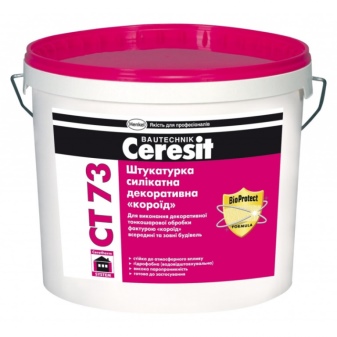
Before applying this plaster, the walls must be treated with a special silicate primer, which will entail additional time costs.
An important and special property of glass-based plaster is its resistance to fire, which provides additional fire safety.
In general, this type of plaster is more finicky to apply., but at the same time it perfectly performs its functions, is comfortable to use.
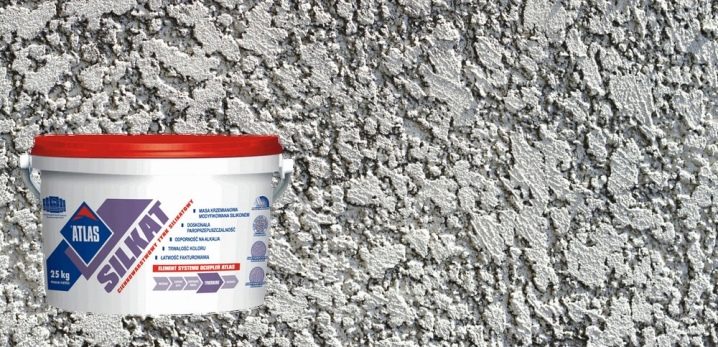
Mineral
Mineral plaster contains marble or granite chips as the main component. Has cement in its composition, protects the wall from mold and mildew. The most common option, which also has a low cost. It is possible to use it as a base for painting.
The level of strength of this material is much higher than that of an acrylic mixture, therefore, subject to all operating rules, such a coating will be the most durable.Due to its porous structure, mineral plaster exhibits an interesting property: at high air humidity, it does not weaken, but, on the contrary, enhances its protective properties. Calmly passes air, but at the same time is an excellent heat insulator.
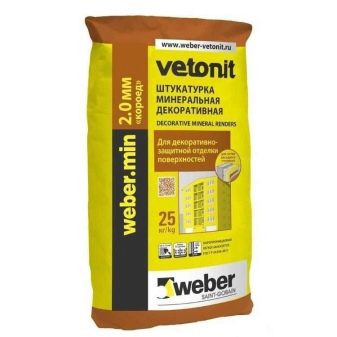
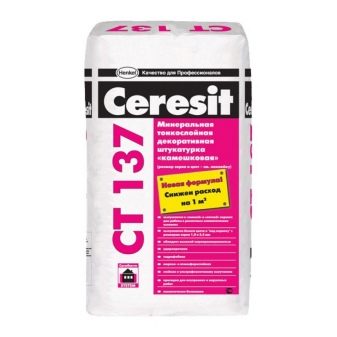
Such a mixture is very successful when working with drywall in the interior decoration of premises.
Since the mineral mixture can be presented in a transparent form, it can be easily tinted in different colors and is very convenient for decorating the interior surfaces of the room. Different textures of this mixture give a different effect to the finished wall., so, it is optimal to create a variation of "fur coat" with this type of plaster mixture.
It must also be remembered that it is quite problematic to calculate the consumption of the mineral composition, because the layer thickness will depend on the size of the crumb fraction... The popular wet silk texture is created from mineral plaster.

Silicone
This type of plaster has a high elasticity, an almost unlimited choice of colors, does not require special care. But there is also a drawback, it is the high cost of the material. This mixture appeared relatively recently, and it is based on polymer resins. The obvious advantages are high adhesion, high elasticity. Such material does not attract dirt at all, resists fungi and mold.
The coating is so durable that it can be successfully used in industrial areas, since it is absolutely resistant to acid and alkaline influences. For facades, you need to choose frost-resistant mixtures... The mixture is consumed approximately 3-4 kg per 1 sq. m of surface.
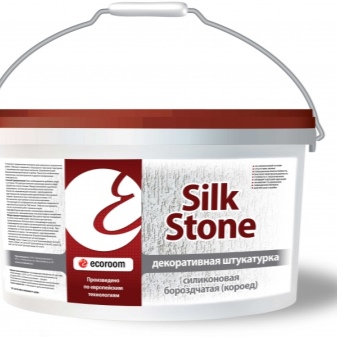

Types of mixtures
Mixes for interior decoration, finishing differ in their structure and properties:
- Textured or textured plaster becomes such due to the presence of medium and coarse solid particles in the composition, for example, stone sand, crumbs. An interesting nuance: textured plaster can be made independently by adding various additives to the usual mixture to change the structure, for example, marble chips.
- Smooth plaster creates an imitation of glossy walls with various patterns and stains inside. This effect is achieved by a special application technology.
- Embossed or structural the mixture, just like smooth, is applied in a special way, which allows you to create deep reliefs and embody various design solutions.
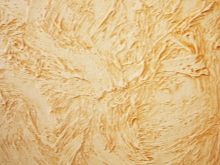

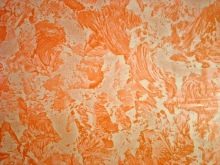
The decor of the room can be made with various textured plasters. For example, an apartment in which the entrance hall is decorated with one type and color of plaster, and the corridor or bathroom with another will look very impressive.
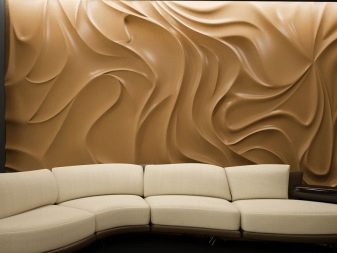
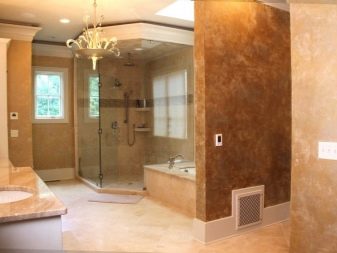
Consider the most popular types of decorative plasters.
Venetian
Venetian plaster is ideal for bathrooms. It looks like a marble floor. For the base of such plaster, stone dust is used.
Applying it is not an easy task, sometimes you have to apply up to 6 layersto get the desired result. But when it is achieved, there can be no regrets about the effort spent, the room takes on such a beautiful and spectacular look.
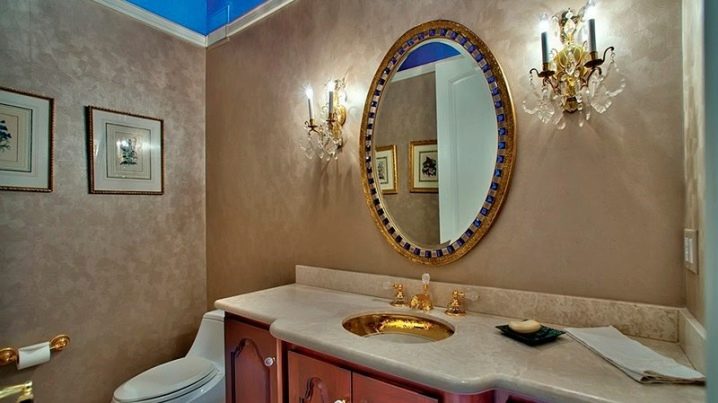
Using Venetian plaster, you can create both a smooth and embossed effect, it all depends on the application technology. The big plus of this plaster is that it fits well on any surface. Since this mixture is initially transparent, it is possible to give it almost any color.
With proper application and conditions of use, such plaster will last up to 15 years.
In order for the Venetian mixture to become textured, large marble chips are added to it.
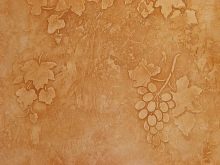
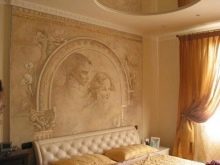
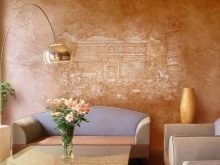
Bark beetle
Plaster "bark beetle" is an excellent option for facade decoration. Due to its structure, it has increased strength, and damage to it is hardly noticeable, therefore it is also used for office or public premises. There are two types, which differ in the composition of the base substance.The first is created on the basis of acrylic, and the second is based on gypsum.
Material with an acrylic base can be purchased completely ready-to-use, while plaster with a gypsum base can only be found in the form of a dry powder.
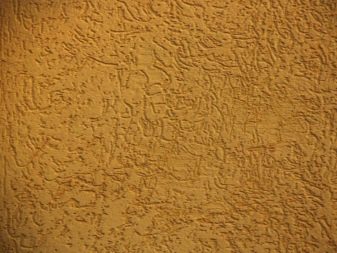
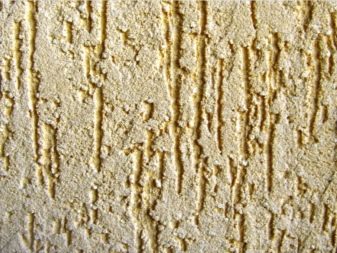
The granularity of this mixture is due to the presence of granules from marble or granite. The effect depends on the size of these granules, so the larger ones will leave wide furrows, while the smaller ones will leave almost invisible tracks. Marble granules can be replaced with polymers, then the weight of the mixture will be significantly reduced.
Withstands extreme weather, well resistant to high humidity and sunlight. Easy to clean with sponge and water.

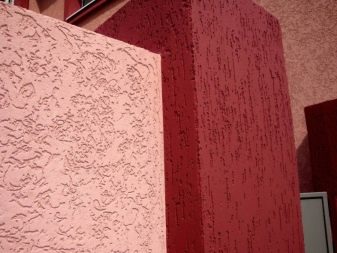
Lamb
A mixture of "lamb", similar to the plaster "bark beetle", facade plaster. Creates an embossed wall covering, reliable and effective. Indoors, it can also be used, especially when there is a need to apply a particularly resistant and durable material.
Applies to any walls... Lies on foam concrete, due to its vapor permeability, prevents the accumulation of condensate between layers, which provides a favorable microclimate in the room.
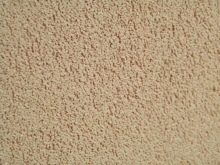
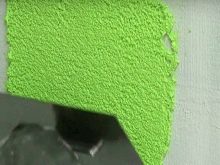
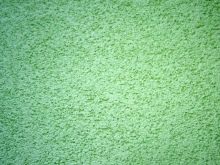
Scope of application
Plaster is used for finishing residential premises. In this way, the walls are prepared for painting or wallpapering. There is also a plaster for finishing the facades of buildings. Plastering work is carried out to level and strengthen the walls, as well as to warm the room.
The most common option for plastering for the purpose of insulation is to apply the mixture over penoplex... Penoplex is an ideal thermal insulation material. They are surrounded by the facade of the house, then a layer of penoplex is covered with plaster mortar. Indoors, a similar insulation option is also possible.
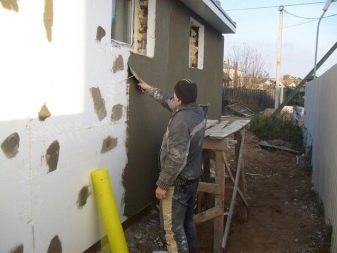
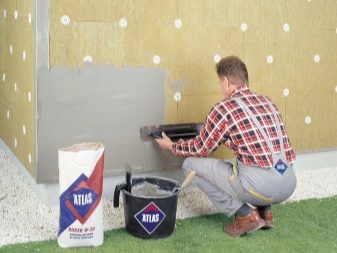
Plaster is an almost universal option for finishing any surface. Laying the mortar is possible on brick, on concrete and even wooden surfaces can be covered with a plaster mixture.
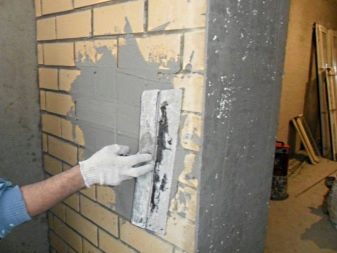
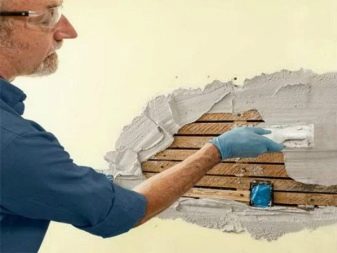
Contrary to popular misconception, the solution can and should be applied to polystyrene foam.
Being an excellent thermal insulation material, foam plastic is quite fragile and needs long-term protection from external destructive factors. And plaster is perfect for this.
All kinds of decorative plasters help to make the decoration of the room original and even unusual. There is a special tool for decorative plaster - curly roller, with which you can create real masterpieces in wall decor... Its principle of operation is as follows: a roller imprint remains on the wet surface of the plaster mixture, which is a pattern.


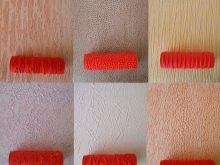
The roller cover can be made of various materials: it can be leather, plastic, foam rubber, rubber. The visibility of a "fur coat" will create fur rollers. The foam sponge, from which the roller cylinder is made, can be wrapped with threads in various ways with your own hands, creating your own unique ornament.
For to make pronounced patterns on the surface of the plaster mix, you will need hard-coated rollers... Such rollers will be reusable, with a convex or, conversely, a concave surface, to create volumetric or depressed patterns.
To create a drawing, plaster is applied to the wall, they wait for a while for it to dry, and then they begin to move with a roller along the layer, giving the desired look. Movements should be smooth. It is important to apply the pattern joint to joint, avoiding overlaps and overlaps.
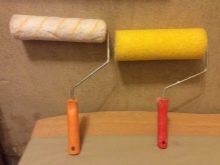
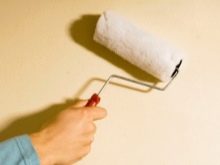
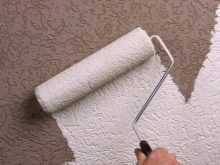
- Sgraffito - another very interesting type of decorative plaster. The technology of its application is very peculiar. Layer on layer, using a stencil, a multi-colored mixture is applied, which is then removed in parts. The result is a complex pattern. This surface can be dry cleaned.If the integrity of a part of an element is violated, it is necessary to replace the entire element, that is, completely remove the damaged area, and re-cover part of the wall.
- Terrazitic plaster mix is used for facades. Looks like imitation rocks. The rather heavy and dense structure of this plaster does not leave much room for creativity.
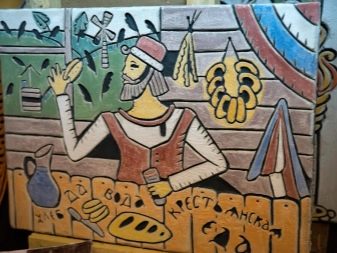
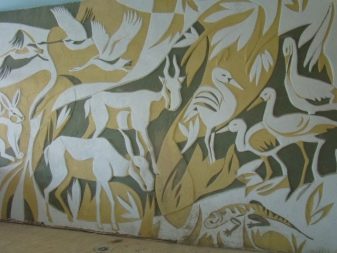
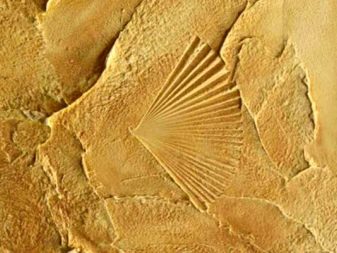
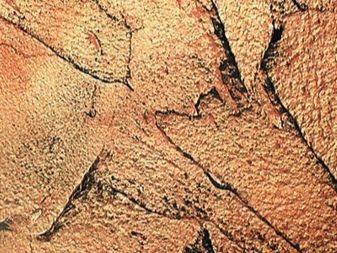
The usefulness of decorative plasters lies in the fact that they smooth out the unevenness of the wall. If there are inaccuracies on the surface, they are easily hidden under the embossed patterns.
Since modern technologies make it possible to create various imitations on the basis of decorative mixtures, such as rocks, silk and velvet, marble and granite, the scope of application of plasters is extensive.
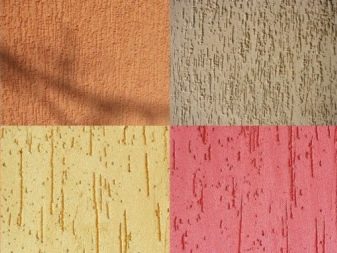
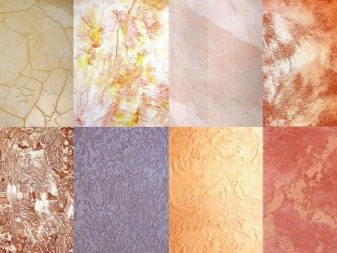
Required tools
To perform plastering work, you will need special tools. Knowing the list and purpose, you can purchase them yourself. And even make some with your own hands.
- Trowel - a kind of trowel. Designed for measuring material. With a trowel, they throw the mixture onto the wall and pre-smooth it over the surface. It looks like an iron spatula with a small wooden handle. The ideal size is 12-18 cm. It is usually made of stainless steel. When choosing a tool for work in winter or autumn, it is preferable to stay on a trowel with a wooden handle. It should also be noted that different tools are suitable for different types of mixture. For cement mortar, a cement trowel, and for plaster "bark beetle" special plastic.
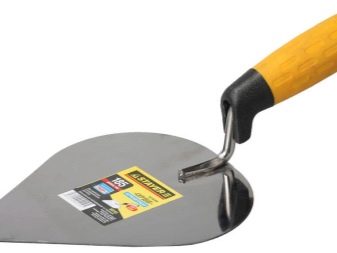

- Scraper - used for cleaning irregularities. This is a tool designed for various cleaning jobs. It is convenient for them to scrape off irregularities, paint residues or wallpaper. A spatula can be used as a scraper, then its blade must be shortened, so it will be easier and more convenient for them to work. The scraper can be paired with a rag or sponge in order to soak tightly adhered wallpaper. Sometimes the scraper may not be able to cope with old plaster that has been firmly placed in places. In this case, it is wise to use heavy artillery, such as a hammer drill.
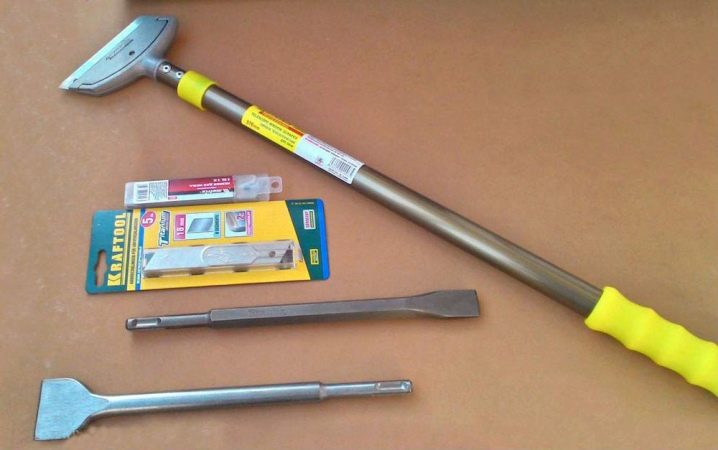
- Grater - this is a wooden plank on which a wooden handle is attached. With a grater, smooth the layer of the mixture along the wall, after using the trowel. The material for the manufacture can be different. Most often, graters are wooden, plastic, rubber and metal. The plus of a wooden float is a low weight, which can be significant during prolonged work. Cons - fragility and instability to moisture. A plastic grater, as a rule, is purchased for a one-time job and is used by professional craftsmen. For a beginner, such a grater will be difficult to use and will instantly become unusable. The advantage of a metal float is that it is durable and smooth, perfectly levels the wall and protects the plaster mix from moisture.
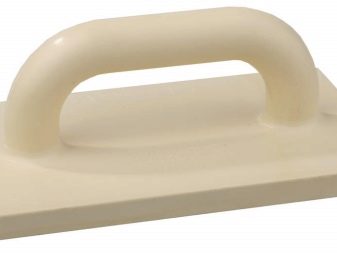
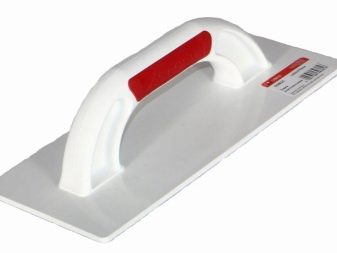
- Poluterok - just like a float, it can be used to smooth the mortar, but at the same time it is convenient for them to work in the inner corners. They remove excess mixture and application defects.
- The rule - a tool for checking the unevenness of the walls and fixing them. It is a long, perfectly flat strip of metal or wood. Wooden rules are short-lived because they deform when exposed to moisture. To increase their service life, they can be impregnated with protective agents. The aluminum rule is light and lasts a long time. The alignment of the walls occurs by holding the rule along the lighthouses.

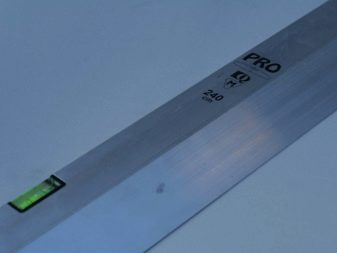
- Mixer used to thoroughly stir the mixture. Its use allows you to save time and get a high-quality solution. Mixers are single-spindle and double-spindle, according to the number of nozzles. Replaceable nozzles are different for different types of material. The straight paddle is used for mixtures where tightness is required. It works horizontally.Spiral blades are suitable for cement and putties. A nozzle with opposite screws is used to stir paint and varnish mixtures. Universal whisks are not the best choice, since they will cope equally poorly with all types of material.


- Profile for plastering will be necessary when plastering on lighthouses. The actual beacons will be metal or wooden beacon profiles. Wooden lighthouses do not require a special solution or glue, and metal ones are necessary when using a gypsum solution. The most used beacons are made of steel and are suitable for a plaster layer of 6-10 mm. Such beacons can be left in the wall after finishing the plastering work, and it is not even recommended to remove them in order to avoid cracks. Plaster beacons help the coating to withstand temperature changes in the room, as they break the walls into fragments. It is easy to install them, it is not necessary to have experience, but when planning to do it for the first time, it is better to ask for help, it will be difficult to do this work alone. Suitable not only for walls, but also for ceiling surfaces.
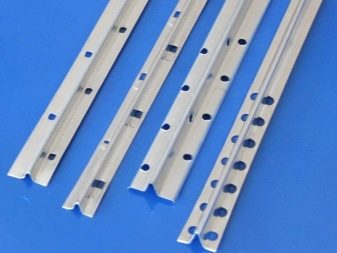
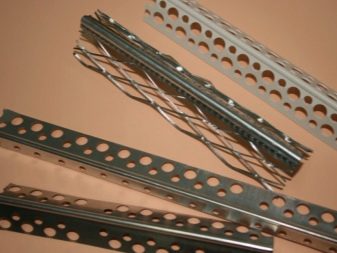
- Shingles - additional material and auxiliary tool for the preparation of wooden surfaces for plastering. Wooden vertical surfaces are upholstered with shingles for a more durable fixation of the plaster. In fact, these are wooden strips up to 5 mm thick, which are stuffed perpendicular to each other to form a lattice. Subsequently, the mixture will be applied to this grid.
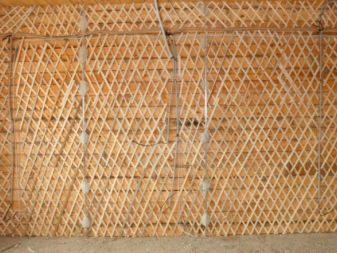
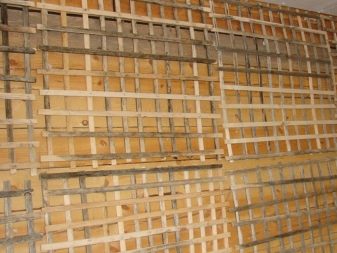
- Plane - necessary for cutting off excess plaster in the corners of the room. A type of planer - a grinder, powered by electricity. It is convenient to grind corners with such a machine, having some practical skills. Grinding is done with sandpaper tucked into the machine. When purchasing an ordinary plane, you must make sure that its knives are aligned with the plane of the sidewall. Protruding knives will leave grooves on the surface of the plaster mix.
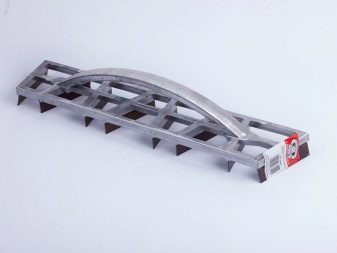

- Stencil - will help when using decorative plaster. Using a stencil, you can create volumetric reliefs of various shapes, repeating patterns or single accents. You can make a completely unique design. The stencil looks like a plate of transparent plastic, in which a pattern is cut. You can purchase ready-made stencils or order your own pattern from a printing company. The pattern applied through the stencil will not give a large volume to the surface, but rather protrude slightly above the main part of the wall. You need to outline a place for the future pattern and secure the stencil with masking tape. Between the layers of the mixture to be applied, it is advisable to use a primer. After the material has dried, the stencil is removed with a quick, confident movement.
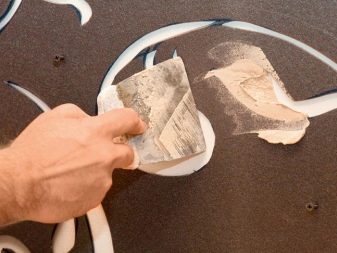
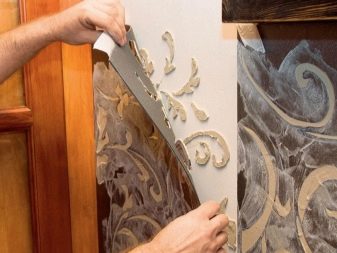
How to calculate the expense?
It is quite simple to calculate the consumption of the mixture: the manufacturer indicates the parameters for the calculations on the packaging of the material. It must be borne in mind that when applying plaster to uneven walls, the consumption increases. And also the consumption will depend on the type of mixture. Roughly determine the rate per sq. m when applying a layer of 10 mm.
Thus, the flow rate will be:
- for plaster composition - 10 kg;
- cement mixture - 16-18 kg;
- decorative is consumed in the amount of 8 kg per sq. m.
If you need more accurate calculations, you can use the online calculator or the scheme recommended by the manufacturer.


How to prepare the solution?
As a rule, walls are plastered in three layers:
- first layer fits by spraying, so the mixture must be of sufficient liquid consistency for it;
- second layer more astringent;
- third - even thicker.
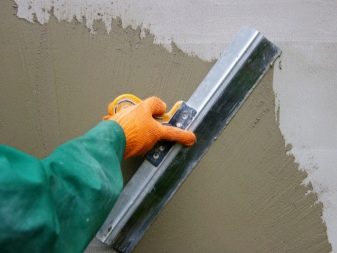
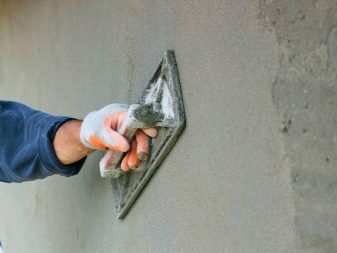
If the plaster will be laid in one layer, it is necessary to dilute a solution of medium density. If the solution is too liquid, then adhesion to the surface will not occur, and if there is a lot of astringent content in the mixture, the layer will begin to crumble.The three constituents of the mixture: liquid (water), binder and the desired aggregate must be mixed in the correct proportions to obtain the desired result.
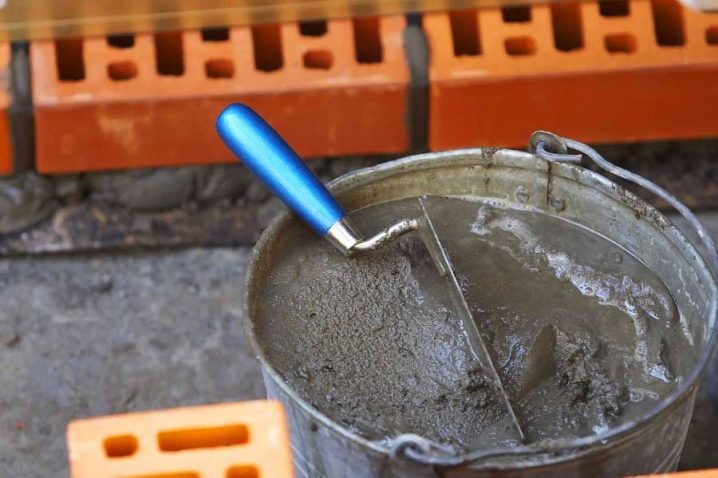
Consider the quantity norms for various compositions:
- For cement plaster the proportion is as follows: first spray coat - 1 portion of binder to 4 portions of aggregate. Primer - 1 part binder for 2-3 parts of filler. The third, finishing solution is diluted in a ratio of 1.5 parts of aggregate to 1 part of binder.
- With the addition of clay paste... For three consecutive applications, the proportions are the same: it is recommended to add 3-5 parts of aggregate to 1 part of clay.
- Lime composition assumes the following recipe: spraying - up to 4 parts of aggregate per 1 part of binder. Second application of 2 to 4 parts of aggregate to 1 part of binder. For the final, finishing layer, 2-3 parts of aggregate are consumed per 1 part of the binder.
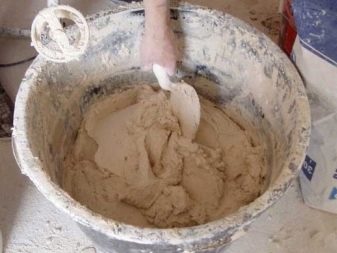
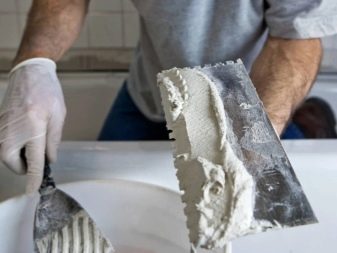
- Lime-cement mixture is calculated for one portion of cement. First coat, spray, 0.5 parts of lime powder and 3 to 5 parts of aggregate. The second, soil layer for optimum consistency will require 0.7 to 1 parts lime and 2.5 to 4 parts aggregate. Finishing should be carried out using a solution of 1-1.5 parts of lime to 1 part of cement and the amount of sand should not exceed 2.5-4 parts.
- In a clay-lime mixture from 3 to 5 parts of sand should be 1 part of clay and 0.2 parts of lime.
- Cement-clay the mixture does not require a variety of proportions for all three layers. You can use one mixture at the rate of 1 part cement, 4 parts clay and 6 to 12 parts sand.
- Lime-gypsum composition made from 1 part lime, 1 part clay and 2-3 parts sand for the first layer, 1.5 parts gypsum and 2 parts sand for the second layer and 1.5 parts gypsum for the third layer. It is important to note that no sand is added at all for the finishing layer.
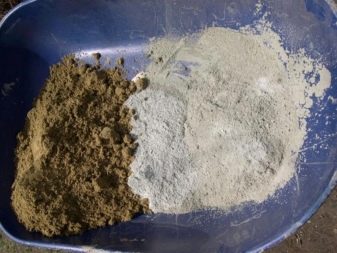
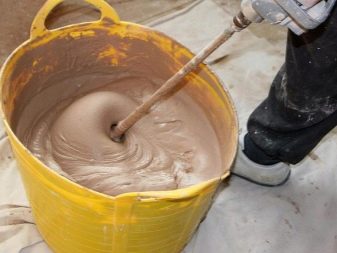
What should be the layer?
When starting plastering work, it is important to understand that the layers of the plastering mixture should be made as thin as possible. This will ensure the strength and durability of the applied coating, while thick layers will shorten the life of the renovated wall material. There are certain standards for the thickness of the layers, which are due to the surface material.
On a brick wall a layer of at least 5 mm can be applied, the maximum thickness without reinforcing mesh is 2.5 cm, and using a mesh of 5 cm.
Concrete walls will require the application of a 2 mm layer, the maximum thickness without a grid is 2 cm, and with a grid of 5 cm.
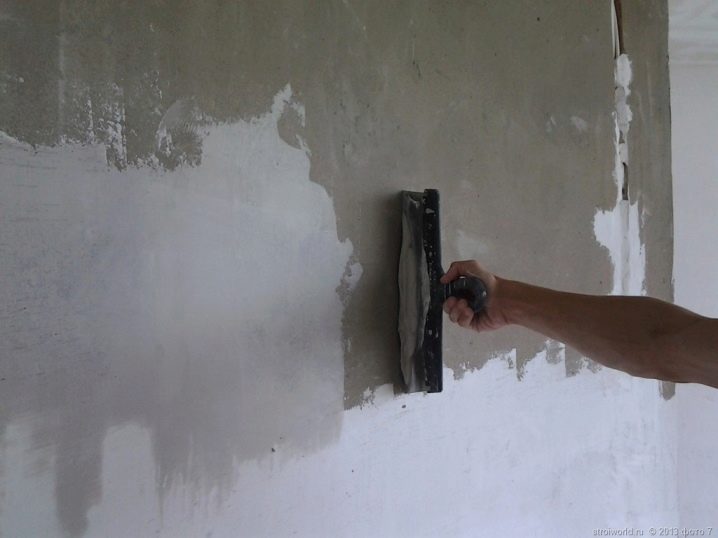
Wood covering due to its smoothness, it does not hold the plastering mix well. Since to carry out such work on such a surface, additional devices will be required, such as reinforcing mesh or shingles, the parameters of the layer will depend on the thickness of the products used. You can focus on the thickness of 2 cm.
The three recommended plaster coats will also have different thicknesses:
- First layerWhen the composition is simply thrown onto the wall surface, it is called spraying, it does not level out and is a preparatory stage for the main application, contributes to better adhesion and ease of laying the following layers. For spraying, the normal thickness on a brick surface will be 5 mm, and for a wall made of wood - 8 mm.
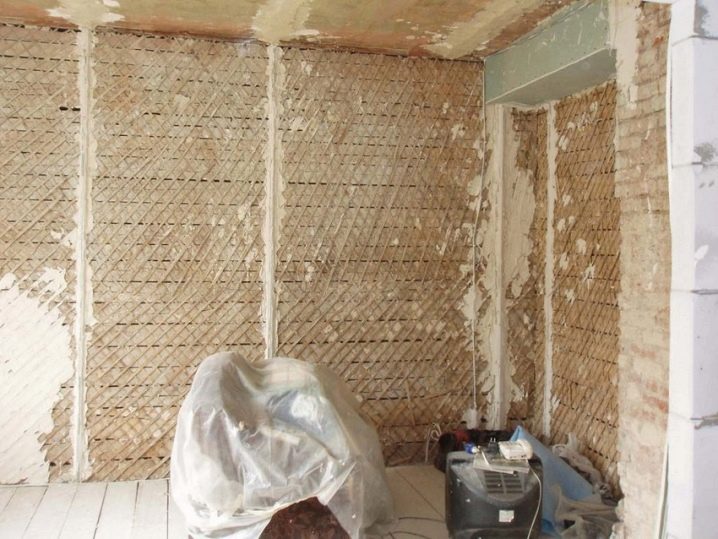
- Next layer, called a primer, basic. Its thickness will depend on the type of mixture and on the surface material. It can be from 0.7 to 5 cm.
- Third, finishing layer, finishing... As the final one, it performs a decorative function, its thickness should not exceed 5 mm, optimally 2 mm.
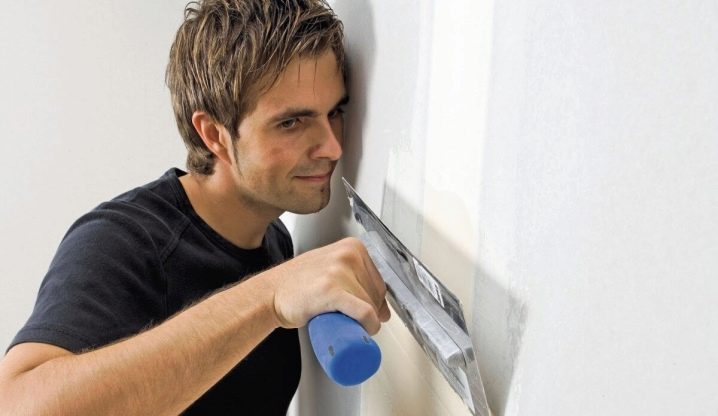
How to choose beacons?
Lighthouses for plastering walls are used when there are significant irregularities. These are assistive devices that work in conjunction with the rule tool.The lighthouse is a kind of guideline for the rule on which the tool rests. It looks like a metal or plastic profile of different sizes and sections. There are straight and angular.
Guides can be made by yourself from wooden blocks... When plastering walls made of wood and foam concrete, this can be even more convenient, since such beacons can be fixed on the wall with self-tapping screws. You can also make lighthouses yourself from plaster or alabaster. This option also has its advantages.
If it is recommended to dismantle the industrial lighthouses according to the technology at the end of the plastering of the wall, then it is not necessary to remove the self-made lighthouses.

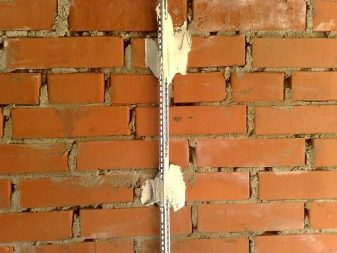
Before installing the beacons, the rule is applied to the surface to determine the most protruding part. Beacons will be erected from this point. They must be rigidly fixed to the surfaceso as not to change its position under pressure. First, the beacons are placed in the corners, providing a small indent. Perfect precision is needed here. Beacons must be strictly vertical.
After installing the main beacons, threads or fishing lines are pulled on them, and already focusing on these lines, intermediate points are set. You need to pay attention to the length of your rule, it also matters in the installation of poppies. They should be positioned so that the distance between them was 15-20 cm less than the length of the rule... It is also desirable that this distance should not be more than half a meter, so that you do not have to level out large volumes of area in one approach.
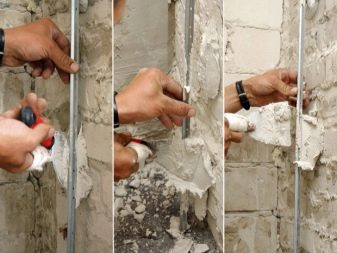
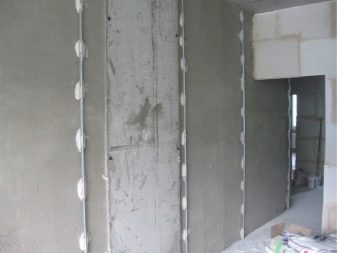
You need to constantly monitor the level during the installation of beacons... The process of installing a system of beacons takes some time and is quite laborious, but at the same time, this approach will allow you to apply the plaster more evenly and skillfully, the walls will look high-quality and professionally made.

Surface preparation
Different surfaces require different preparation. However, there are general rules that must be followed before applying the mixture. If you do not pay enough attention to the preparation, problems will inevitably arise when laying the mixture or during the operation of the room. Detachments, cracks and chips are possible.
The most important step is to thoroughly clean the surfaces from debris, dust, stains and other contaminants.
It is best to use metal brushes for cleaning. For best results, this brush can be attached to a drill to enhance the effect with fast turns.... If soot has settled on the walls, you can wash it with a solution of hydrochloric acid. Oil and resin stains are removed mechanically.
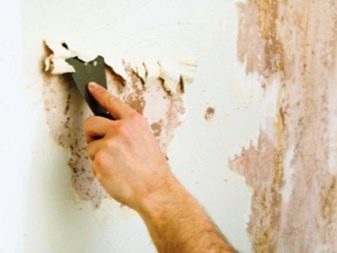
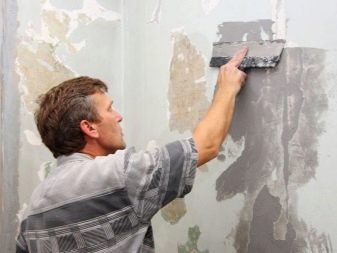
To prepare a brick wall, you need to carry out the following stages of work:
- first clean the surface with a wire brush;
- if there are irregularities that are visible to the naked eye, you need to apply an additional layer of the mixture without rubbing it;
- mounds with a height of more than 10 mm are cut or chipped off with any convenient tool at hand;
- the depressions are covered with a mixture;
- the seams between the bricks must be thoroughly cleaned not only superficially. They are knocked out with a hammer or chisel to a depth of at least 10 mm, and then they are passed over the surface with a metal brush;
- remove the remnants of dust and dirt;
- at the end of the preparation, you need to moisten the wall.

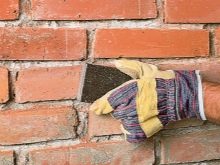
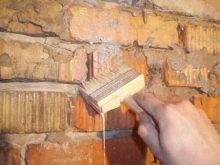
The concrete wall is prepared according to the following scheme:
- the wall must first be cleaned with brushes from dirt, dust, remove stains, if any;
- then it is necessary to deal with deviations and irregularities according to the principle described in the preparation of brick walls;
- the concrete wall must be roughened, get rid of its smoothness. If the surface is small in area, then it is quite possible to make grooves, using a chisel and a hammer, at a distance of 3 mm. If it is necessary to process a large piece of the surface, the notches are applied with a jackhammer. It is best to arrange them in a checkerboard pattern;
- a metal mesh can also be installed on the concrete surface. It will promote good adhesion of the plaster mixture to the wall. The mesh is stretched and fixed with dowels in a checkerboard pattern. After tension, it is coated with a solution without rubbing;
- the necessary roughness can also be obtained using a sandblaster. As a rule, this apparatus is used for large volumes of work, since its use implies a significant increase in the cost of costs. The principle of sandblasting is that sand is sprayed under pressure, and its small particles hit the concrete with force, causing microdamage to it, which ultimately will give the necessary adhesion.
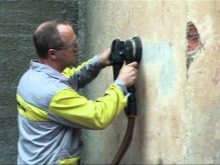
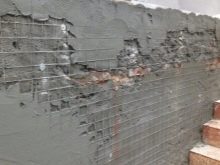
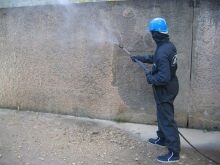
A better choice for finishing wooden walls is drywall.... But sometimes there is a need to apply the plaster mixture. In such cases, shingles are classically used. The process involves stuffing small wooden shingles onto the surface.
There are also ready-made, larger-volume draped sheets that are much more convenient to use, save time and effort. The second option is to attach a metal mesh to the surface. The easiest and easiest way is to drive metal nails into the wall in a checkerboard pattern and braid them with a steel cord..
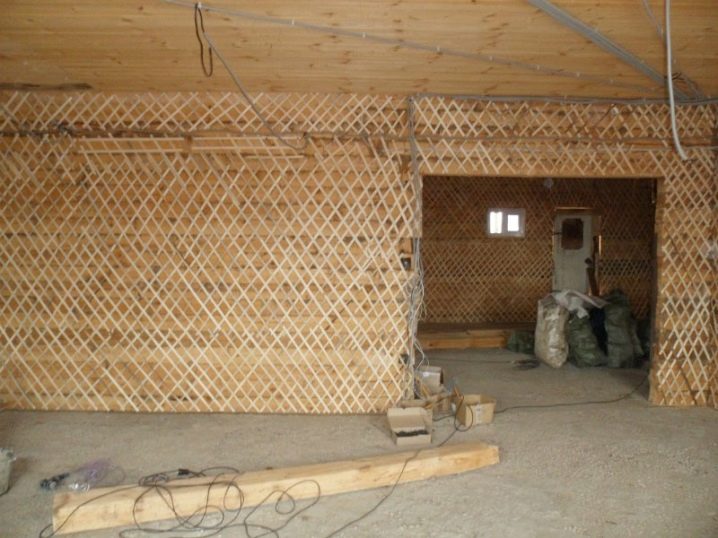
An optional but recommended procedure is surface treatment with a primer.
There are a large number of them, each has certain properties. They are united by one important quality: primers, penetrating deeply into the surface, make it homogeneous, which maximizes the strengthening of adhesion. When choosing a primer, it is recommended to carefully study the information from the manufacturer.... It is easy to do this, detailed and complete instructions for use are necessarily attached to the primer.

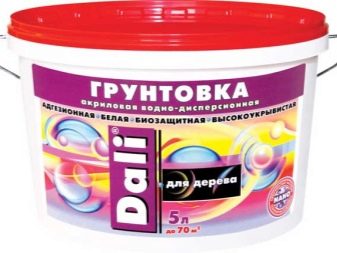
Application process
So, the surfaces are prepared, the mortar is diluted in the correct proportions, the beacons are exposed, the reinforcing nets are stretched. It's time to start the main and final stage - applying plaster. Before you start, it will not be superfluous to once again draw attention to the important points.
Indoor temperature and humidity. As a rule, the information on the mixture indicates the desired or even required temperature and humidity parameters. On average, the temperature should be from +5 to +35 degrees Celsius, and the humidity should not exceed 60%.
- During the application process, it is important to monitor the cleanliness of the instruments. They must be rinsed thoroughly after each step.
- You need to start from the top, gradually moving lower.
- Each layer of plaster must be completely dry before applying the next one. In this case, it is important not to allow drying out.

The application of the plaster mixture is carried out in several successive stages. The first layer, called spatter or spray, is applied by sprinkling the compound onto the wall surface using a trowel. As far as possible, you need to keep the distance from which the mixture is thrown, the same.
It is not necessary to level the applied plaster, unless there are particularly prominent places on it. Large bumps must be removed... How well the first layer is applied depends on how firmly all the plaster will adhere to the wall.
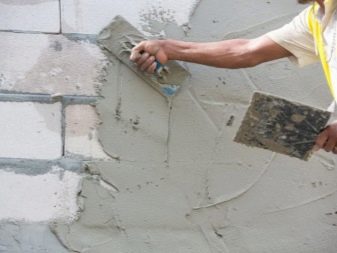
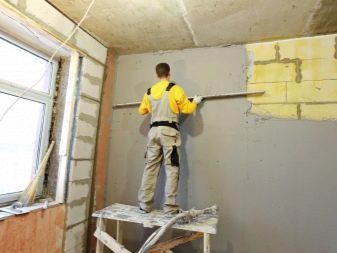
After the spray layer dries up, you can apply the next layer - a primer. It is easy to check how dry the first layer is: you need to press on the surface with your finger, the finger should not get wet and fall into the plaster. The mixture for the primer is thicker, therefore it is applied with a wide spatula and leveled. In this way, a small surface area is plastered, for example a square meter, and proceed to the next section, carefully rubbing the joints with a spatula.
After as the mixture will be applied to a part of the wall measuring 8-9 meters, the following tool will be needed, which is called a rule. The rule is convenient for leveling and smoothing large areas, smooth movements with even pressure. The technique of movements should be self-directed or circular. Do not act jerkily or abruptly.

Gradually, the entire surface will be covered with plaster. In the process, you should carefully monitor possible irregularities and protrusions.... Track areas with dropped particles. They need to be leveled immediately., in small areas, because if defects are found after the mixture is applied to a large area, errors can only be corrected in a way that requires another layer to be applied. And this, in turn, will affect the quality, because the thicker the layer, the less strong and stable it is.
The finishing layer is applied very thinly, but in such a way as to cover all possible imperfections.
The solution for the finishing layer must be homogeneous, the presence of particles larger than 2 mm in the mixture is not allowed... If the previous layer was allowed to dry out, it is necessary to walk along the wall with a brush dipped in water. The mixture is applied with a spatula, pressing its edge against the wall, with sweeping movements in an arc.
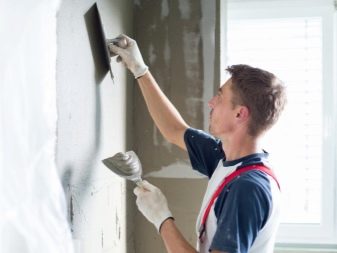
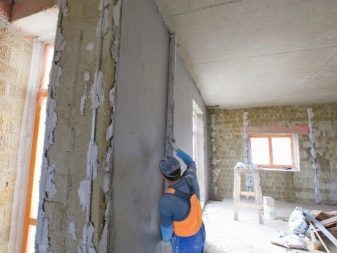
Even if the whole process is made according to technology, small irregularities will be present. That's why at the end of the plastering of the wall, it is necessary to make another type of alignment, called grout... It is carried out sequentially with a grater and half grater tools. The first stage is grouting to rough, the second is smoothing.
Before rough grouting, the surface is slightly moistened. After that, with a float in a circle, with uniform pressure on the tool, they begin to rub the wall. You need to act very carefully so as not to thin the layer of plaster, but only to perfectly level it. For surfaces inside the corners, use a half-trowel.... A tool similar in design and function to a grater, only smaller. "Forcing" the wall is rubbed with a float with a felt layer with even, sweeping movements. Then they move on to the next stage.
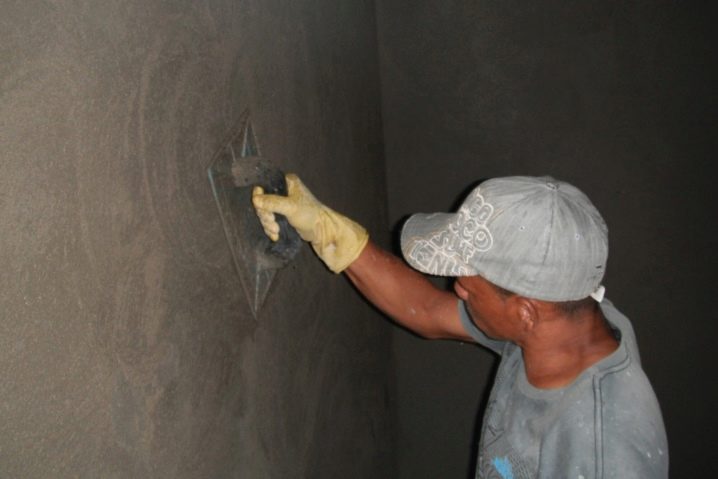
Smoothing is done with a metal float or rubber strip. At first, the movements should be along vertical lines, and then along horizontal lines. You cannot make circular movements or alternate vertical lines with horizontal ones.
If all the rules for applying the plaster mixture are followed correctly, the walls will turn out to be smooth and pleasant to look at.
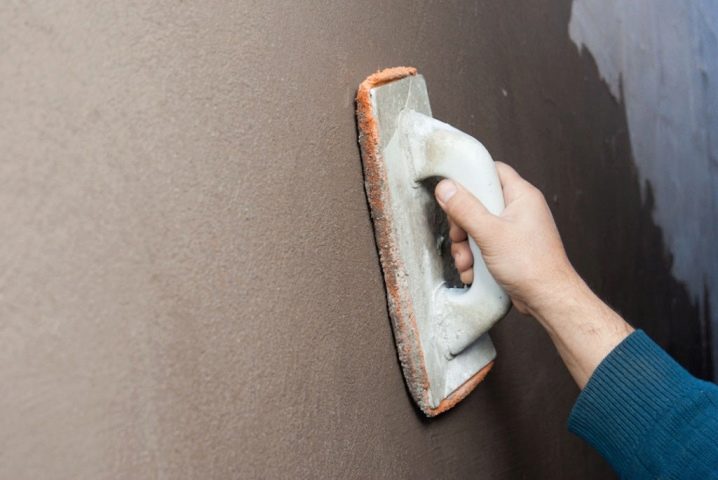
Tips & Tricks
Plastering walls is a rather difficult and time-consuming process, which is still within the power of a beginner. It is important not to forget about the key points. Prepare the walls according to all the rules. When applying plaster for painting, it is necessary to carefully smooth the surface. Throw the solution on the wall carefully, without moving too far from it. Draw straight lines along the beacons.

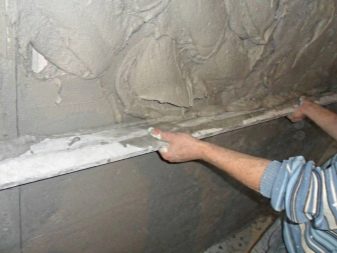
Plaster mortar dries on the walls from 1 day to two weeks... So, for example, for gypsum plaster, the rule applies: 1 day per 1 mm of solution. You can more accurately calculate the drying time by paying attention to the information from the manufacturer of the plaster mixture.
Lime-cement coating can dry within a week. It is not recommended to artificially try to speed up the drying process.The warm room temperature will allow the mixture to dry on its own. This is fraught with negative impact on strength.
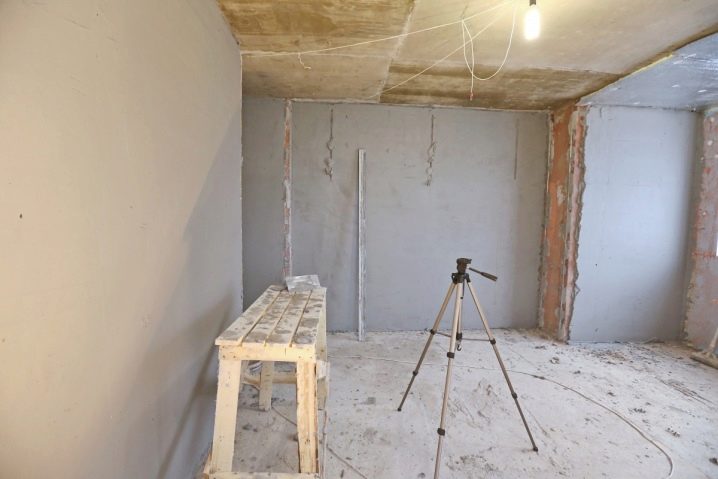
The ideal temperature for working with plaster is +20 degrees Celsius.... Drafts and direct sun exposure should be avoided whenever possible.
Few of the non-professionals know that there is also dry plaster and it is nothing more than drywall. Of course, such material is unlikely to be a good choice for building facades, since it is completely unstable to the effects of climatic phenomena. But for finishing interior surfaces it can be an ideal option, especially in the hands of a renovation novice.
For information on how to properly align the walls with plaster on the beacons, see the next video.













The comment was sent successfully.